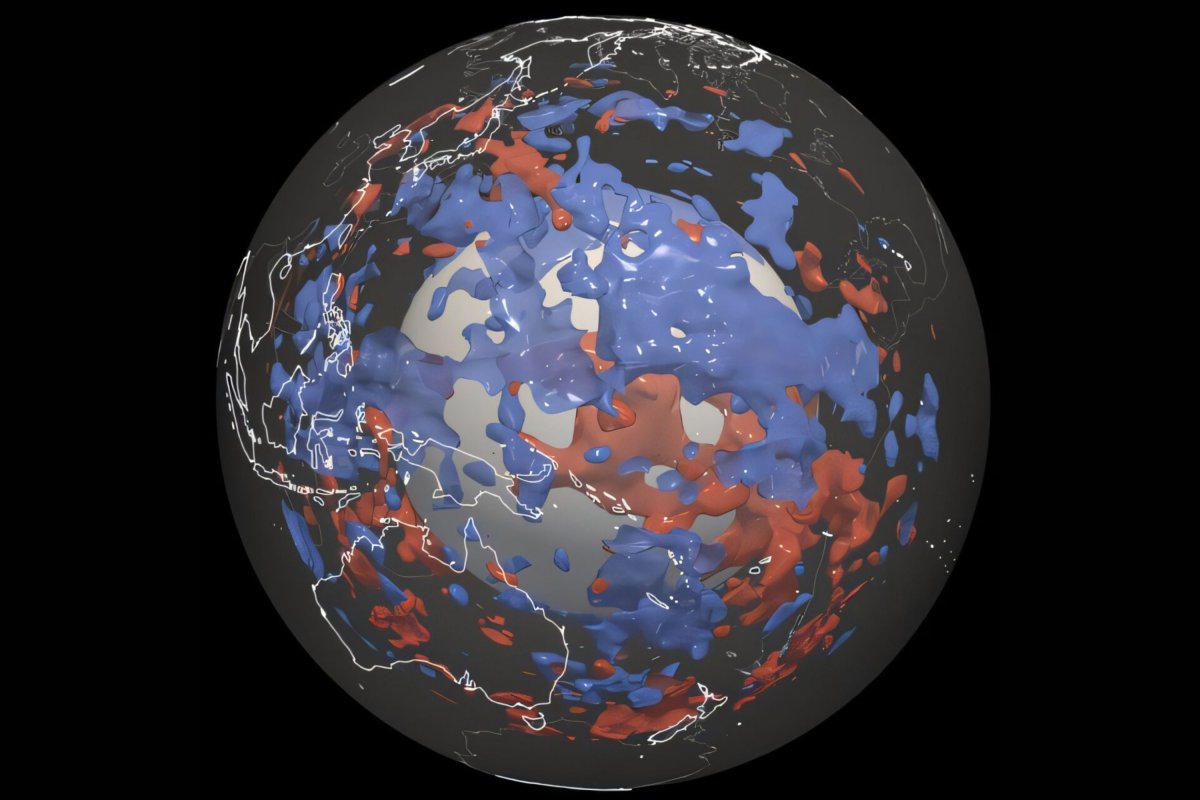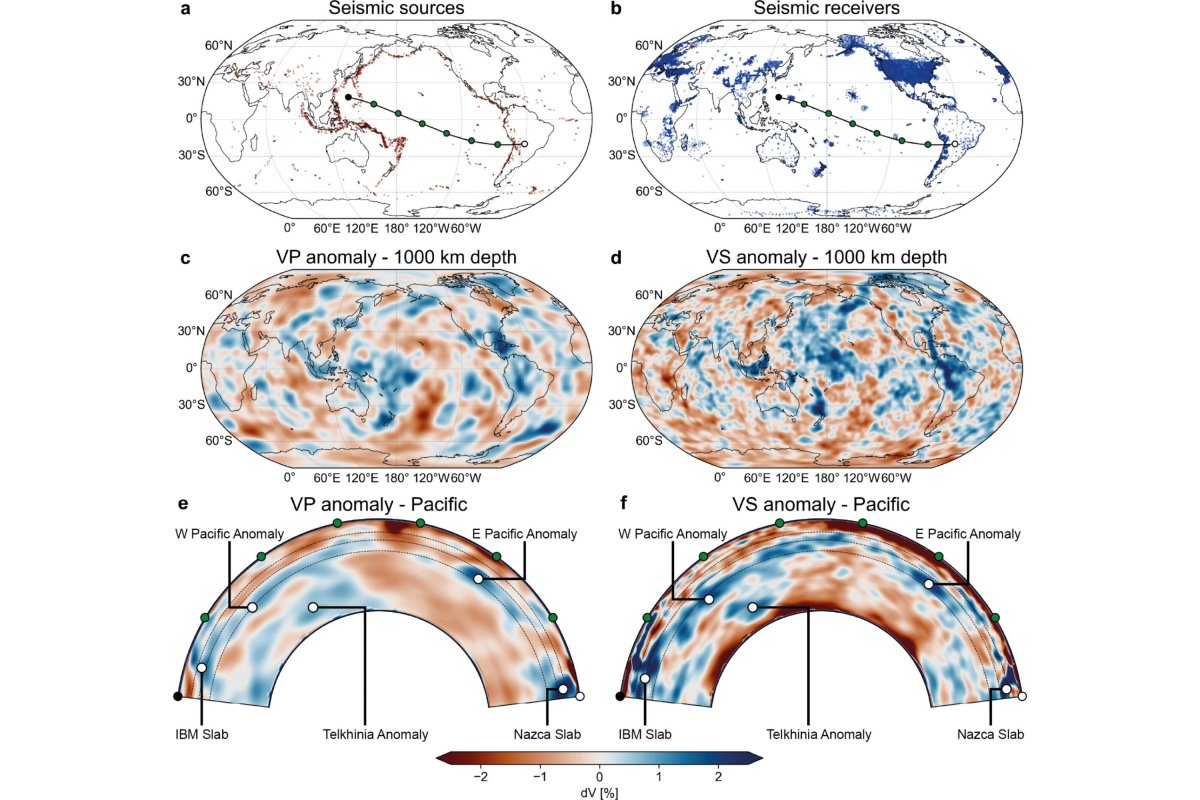Long-lost remnants of tectonic plates have been discovered sunken deep inside the Earth's mantle.
These plate remains were found lurking underneath the center of other continental plates, far distant from tectonic boundaries, according to a new paper in the journal Scientific Reports.
One of these hidden plates was found underneath the western Pacific. However, there is no evidence of plate subduction—a geological process in which one tectonic plate is forced beneath another as they converge at a plate boundary—anywhere near this region.

Where Would You Expect to Find These Plates?
Previously, submerged plates have only ever been found in subduction zones, making this an unexpected find.
Study co-author Andreas Fichtner, a professor of seismology and wave physics at ETH Zurich, compared the finding to a doctor who has been using ultrasound to examine arteries inside the body for many years suddenly gaining a brand new method.
"Then if you give him a new, better examination tool, he suddenly sees an artery in the buttock that doesn't really belong there. That's exactly how we feel about the new findings," he said in a statement.
This discovery was made thanks to high-resolution modeling of the inside of the Earth, using various types of earthquake waves to uncover the secrets of our planet's interior.
What Is Known About the Earth's Interior?
The Earth comprises several layers, each with distinct properties and compositions. We live on the outermost layer, the crust, which is between 15 and 44 miles thick. Underneath the crust is the mantle, an 1,800-mile-thick layer of semisolid silicate materials ranging in temperature from 1,800 degrees to 6,700 degrees Fahrenheit.
Next is the liquid outer core, made of molten iron and nickel, which is about 1,300 miles thick and has temperatures between 8,000 and 10,000 degrees. Finally, at the very center of the planet is the inner core, a solid ball of iron and nickel as hot as the surface of the sun.
By watching how the earthquake waves behave inside the Earth's mantle, geophysicists can model what the Earth's innards are made of, pinpointing areas where rocks are colder or made of something different from their surroundings. This works in a similar way to ultrasound inside our bodies—different density materials reflect and refract the waves in different ways.
Why Is This Discovery Baffling Scientists?
The researchers are unsure what this unexpected hidden plate is made of or how exactly it got to its current location despite the absence of nearby subduction zones.
"That's our dilemma. With the new high-resolution model, we can see such anomalies everywhere in the Earth's mantle. But we don't know exactly what they are or what material is creating the patterns we have uncovered," study co-author Thomas Schouten, a doctoral student at the Geological Institute of ETH Zurich, said in a statement.
"Apparently, such zones in the Earth's mantle are much more widespread than previously thought," he added.
The researchers speculate that the strange material may have been buried in the mantle since the Earth first formed, rather than having been a plate that sank in the past 200 million years.

"We think that the anomalies in the lower mantle have a variety of origins," Schouten said.
"It could be either ancient, silica-rich material that has been there since the formation of the mantle about 4 billion years ago and has survived despite the convective movements in the mantle, or zones where iron-rich rocks accumulate as a consequence of these mantle movements over billions of years," he continued.
While the origins of this bizarre anomaly remain a mystery to the researchers, they hope to use even better models to fully understand the intricacies of the inside of the Earth.
"The waves we use for the model essentially only represent one property, namely the speed at which they travel through the Earth's interior," Schouten said.
He added: "We have to calculate the different material parameters that could generate the observed speeds of the different wave types. Essentially, we have to dive deeper into the material properties behind the wave speed."
Do you have a tip on a science story that Newsweek should be covering? Do you have a question about geophysics? Let us know via science@newsweek.com.
References
Schouten, T. L. A., Gebraad, L., Noe, S., Gülcher, A. J. P., Thrastarson, S., van Herwaarden, D. & Fichtner, A. (2024). Full-waveform inversion reveals diverse origins of lower mantle positive wave speed anomalies. Scientific Reports, 14(1). https://doi.org/10.1038/s41598-024-77399-2
![SOURCE SPORTS: [WATCH] Mets Capt. David Wright Gives Interesting Insight On The Honor Of His Jersey Retirement In Citi Field](https://thesource.com/wp-content/uploads/2025/01/01fs75fy836w8mp4ytwr.webp)



















 English (US) ·
English (US) ·